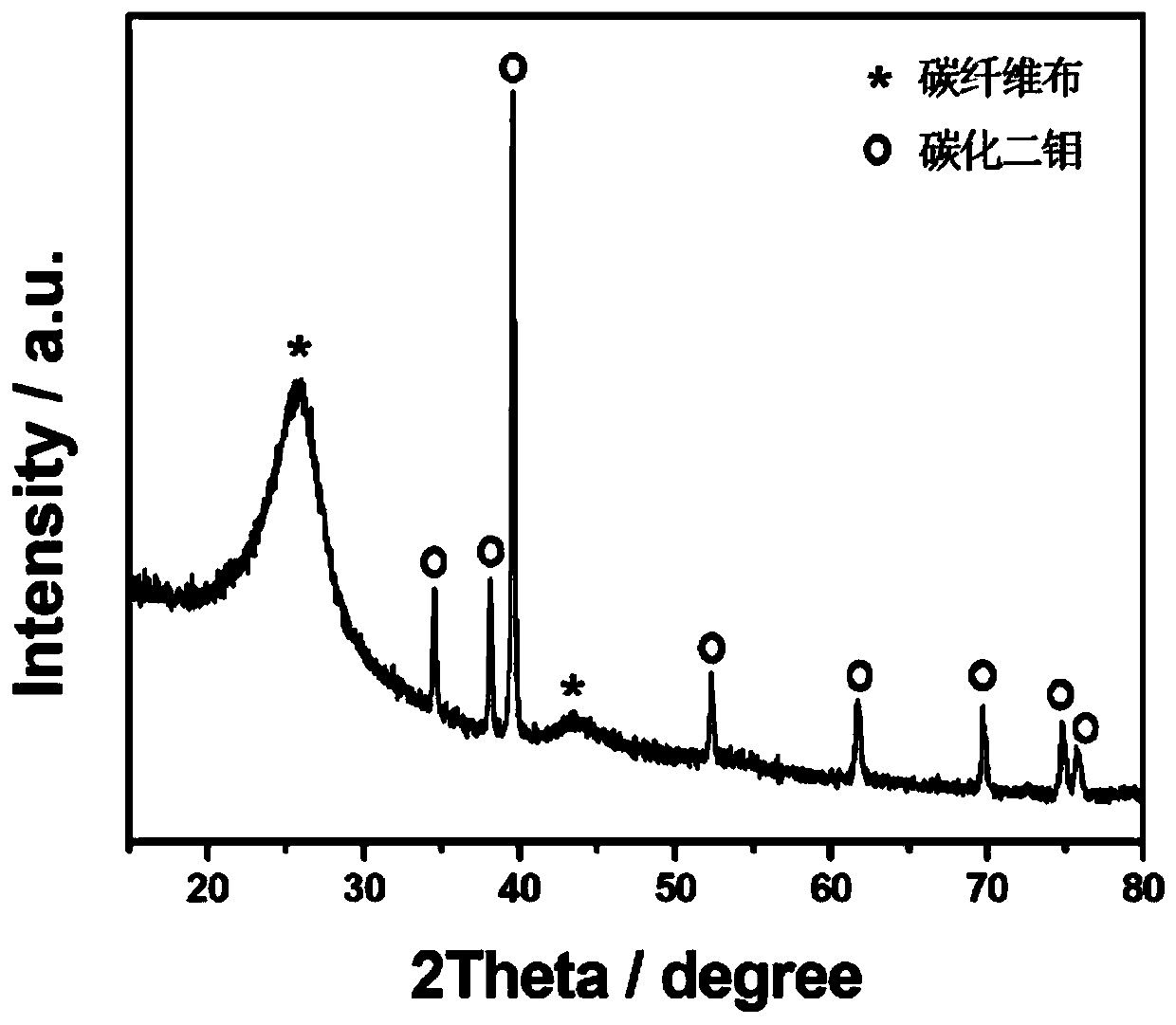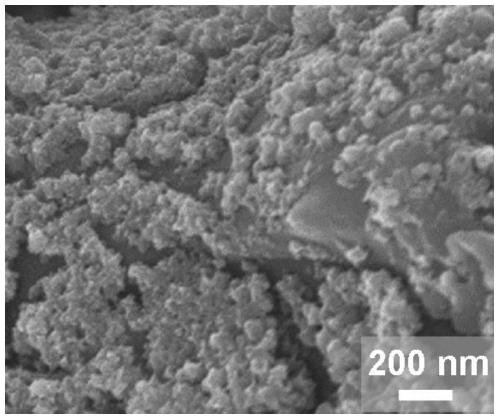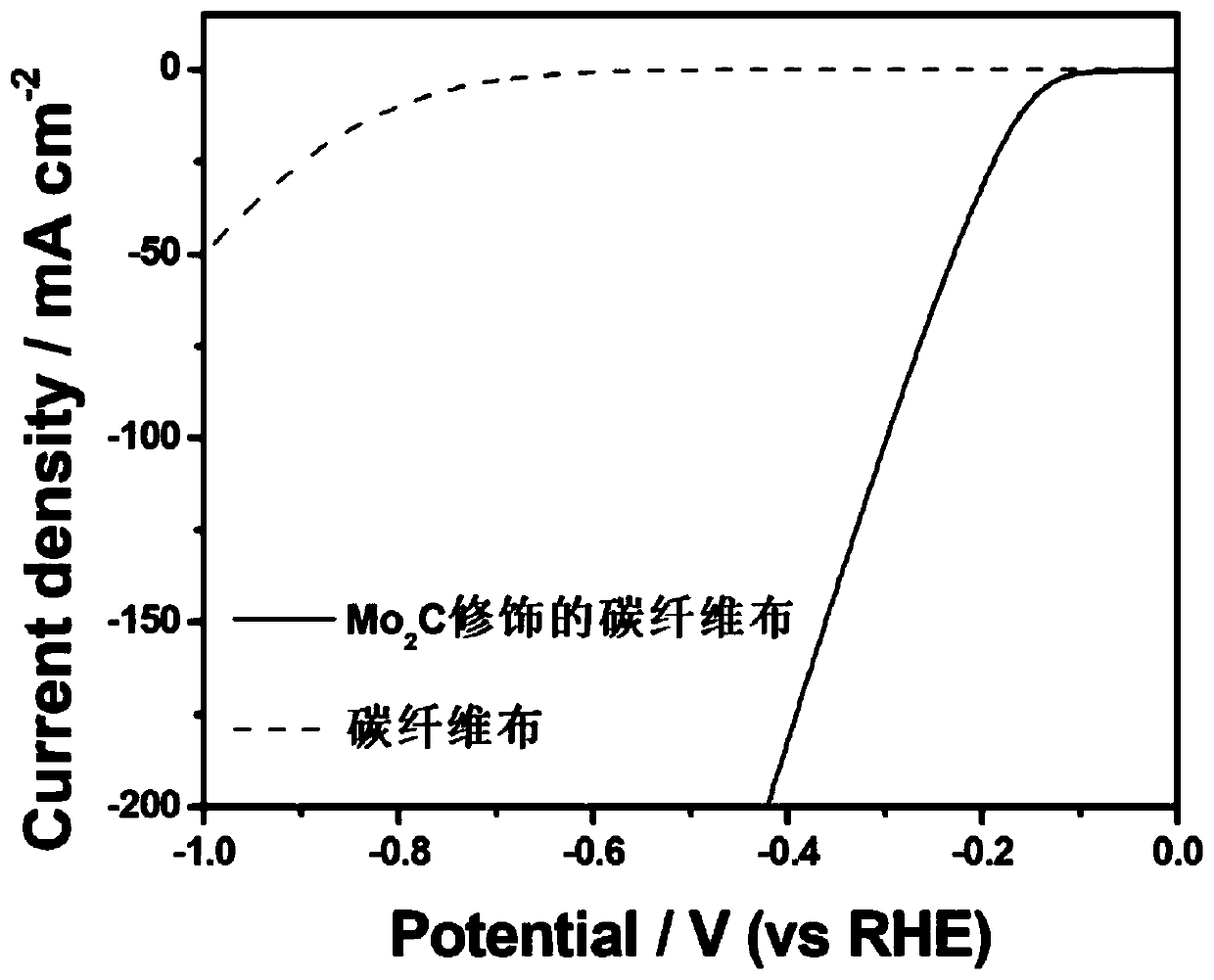Method and application of in-situ electrochemical growth of nano-carbide-based electrocatalytic film on the surface of self-supporting carbon substrate
An in-situ electrochemical, carbon-based technology, applied in the fields of nanotechnology, nanotechnology, nanotechnology for materials and surface science, can solve problems such as being unsuitable for large-scale engineering applications, and achieve excellent electrocatalytic activity, Excellent electrochemical stability, low reaction temperature effect
- Summary
- Abstract
- Description
- Claims
- Application Information
AI Technical Summary
Problems solved by technology
Method used
Image
Examples
Embodiment 1
[0042] (1) Put 300mg of molybdenum disulfide into 300mL of absolute ethanol and ultrasonically disperse for 6 hours with an ultrasonic power of 160W to form a uniform suspension. 2 carbon fiber cloth surface (geometric area is about 18cm 2 ), after drying, a carbon fiber cloth with molybdenum disulfide uniformly loaded on the surface is obtained, and the loading capacity is about 2mg / cm (geo) 2 ; will subsequently carry the MoS 2 The carbon fiber cloth was placed in a crucible, and the temperature was raised to 300 °C at a rate of 5 °C / min under the protection of an argon atmosphere in a tube furnace and maintained for 1 hour.
[0043] (2) After the carbon fiber cloth is cooled naturally, it is fixed on one end of a molybdenum rod (3mm in diameter) with a molybdenum wire as the cathode, and a graphite rod as the anode, and the NaCl-KCl (molar ratio 1:1) molten salt at 700°C In the middle, 2.7V constant tank pressure electrolysis for 1 hour, figure 1 Schematic diagram of th...
Embodiment 2
[0046] (1) Put 300mg of molybdenum disulfide into 150mL of absolute ethanol and ultrasonically disperse for 6 hours with an ultrasonic power of 180W to form a uniform suspension. 2 The surface of the square graphite sheet (excluding the side area, the geometric area of the graphite sheet is about 16cm 2 ), after drying, a graphite sheet uniformly loaded with molybdenum disulfide on the surface is obtained, and the loading capacity is about 5mg / cm (geo) 2 ; will subsequently carry the MoS 2 The graphite sheet was placed in a crucible, and the temperature was raised to 150°C at a rate of 5°C / min under the protection of an argon atmosphere in a tube furnace and maintained for 3 hours.
[0047] (2) After the graphite sheet is cooled naturally, fix it on one end of a molybdenum rod (diameter 3mm) with a molybdenum wire as the cathode, and use the graphite rod as the anode, in NaCl-KCl (molar ratio 1:1) molten salt at 700°C , 2.9V constant tank pressure electrolysis for 45 minu...
Embodiment 3
[0050] (1) Put 300mg of molybdenum disulfide into 150mL of isopropanol and ultrasonically disperse for 6 hours with an ultrasonic power of 180W to form a uniform suspension. cm 3 On the grapefruit peel derived carbon foam (the geometric area of the large grapefruit peel carbon foam is 40cm 2 ), after drying, the grapefruit peel-derived carbon foam with molybdenum disulfide uniformly loaded on the surface was obtained, and the loading capacity was about 1.5mg / cm (geo) 2 ; will subsequently carry the MoS 2 The grapefruit peel-derived carbon foam was placed in a crucible, and the temperature was raised to 260°C at a rate of 3°C / min under the protection of nitrogen atmosphere in a tube furnace and kept for 2h.
[0051] (2) To be loaded with MoS 2 The grapefruit peel-derived carbon foam was cooled naturally, and then fixed on one end of a nickel-chromium rod (5mm in diameter) with a molybdenum wire as the cathode, and a graphite rod as the anode, in 700°C NaCl-KCl (molar rati...
PUM
| Property | Measurement | Unit |
|---|---|---|
| size | aaaaa | aaaaa |
Abstract
Description
Claims
Application Information
 Login to View More
Login to View More - R&D
- Intellectual Property
- Life Sciences
- Materials
- Tech Scout
- Unparalleled Data Quality
- Higher Quality Content
- 60% Fewer Hallucinations
Browse by: Latest US Patents, China's latest patents, Technical Efficacy Thesaurus, Application Domain, Technology Topic, Popular Technical Reports.
© 2025 PatSnap. All rights reserved.Legal|Privacy policy|Modern Slavery Act Transparency Statement|Sitemap|About US| Contact US: help@patsnap.com



